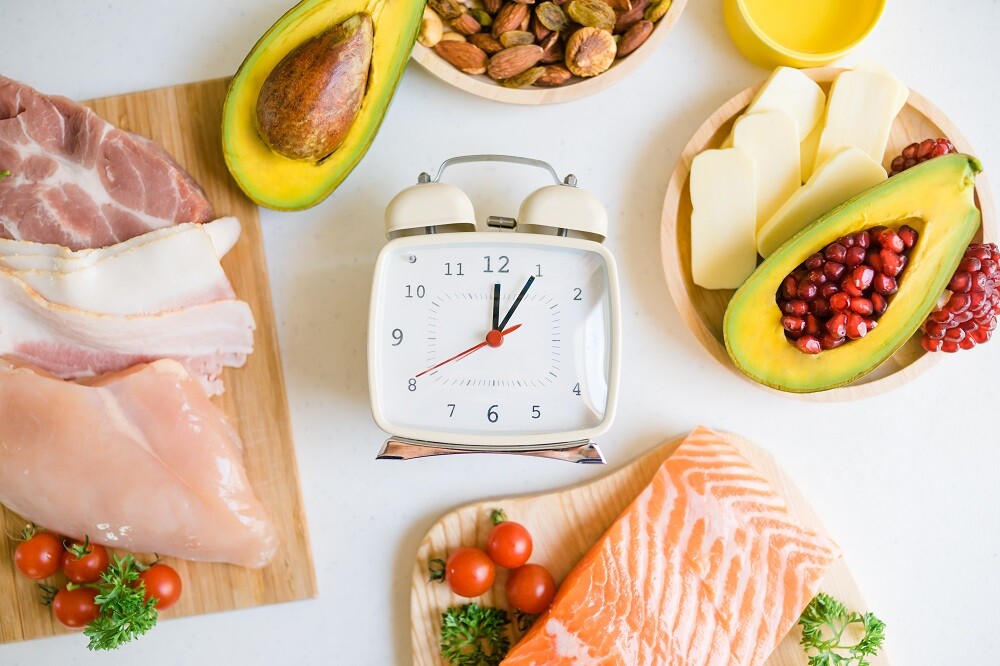I feel very fortunate to have always loved eating vegetables, even brussels sprouts and I believe having European parents certainly helped.
I feel very fortunate to have always loved eating vegetables, even brussels sprouts and I believe having European parents certainly helped.
While Mum never professed to be a great cook and truth be-known she didn’t really like cooking very much, however, I can’t ever remember not enjoying a meal she prepared.
I never grew up eating the dinner most of my Aussie friends sat down to each night; meat and three veg. To make matters worse, those vegetables where often over-boiled until they barely had any colour left and some were almost mush. No wonder many children grew up hating vegetables.
Vegetables cooked with a Sunday roast were always popular because at least they were done in the flavoursome fat of the meat.
As Australia began welcoming more and more migrants from countries throughout Asia, so too did we start to embrace and enjoy other ways to eat vegetables. Stir-fry dishes featuring crisp undercooked veggies soon became a popular addition to our regular meal time menus.
We didn’t have microwaves back then so vegetables were boiled, steamed or baked. Mum would boil brussels sprouts then fry some breadcrumbs in a little butter and toss the cooked sprouts through them just before serving; it made such a difference to the texture and the taste.
2021 is the United Nations’ International Year of Fruit and Vegetables and the aim is to raise awareness of the health benefits of eating more fresh fruit and minimally processed vegetables. We are being encouraged globally to adopt a more plant-based diet both for better health and to help the environment.
Jane Dibbs is the Senior Nutrition Project Officer at Cancer Council NSW and co-manages the development of content for their Healthy Lunch Box website, which is well worth the read.
It’s recommended that Australians eat five serves of vegetables and two serves of fruit a day to keep us healthy.
According to the Cancer Council of NSW, one serve of vegetables equates to ½ cup of cooked vegetables, ½ medium potato and one cup of salad.
Not surprisingly, Jane explains that not many of us eat enough fruit and vegetables daily, mainly because of cost, limited availability, preferring other foods and not being aware of the recommendations.
Additionally, fresh fruit and vegetables have to compete with powerful junk food advertising that presents them as tasty and socially desirable, which Jane Dibbs says means we think of snacking on potato chips instead of an apple.
For many years I was a vegetarian but now I eat fish and seafood as well.
Here’s my alphabet of favourite vegetables and my preferred ways to cook them or to eat them raw.
A – Avocado
Avocadoes contain the good-fats rich in nutrients which are great for the heart, vision, osteoporosis and cancer prevention, they improve digestion, lower the risk of depression and are a natural detoxifier.
Avocadoes have been very expensive in years gone by and smashed avocado on toast is still one of the dearest dishes on many café menus but this season they have been extremely affordable.
I mash up ripe avocado, season with salt and pepper, add finely chopped chives and grated garlic, diced tomatoes and some chili to make a healthy guacamole. Then I julienne lots of raw veggies, including carrots, celery, snap peas, radish, cucumber and florets of cabbage and broccoli. I dip these raw veggies into the avocado dip instead of using corn chips that contain high amounts of unhealthy-fats.
It’s a yummy way to ensure we eat our recommended five daily serves of veggies and a great healthy snack alternative.
B – Beetroot
Beetroot helps to lower blood pressure, has anti-thrombotic and anti-inflammatory properties, protects the liver, improves athletic performance, is anti-cancerous, helps prevent dementia, helps treat anemia, is good for pregnancy, anxiety disorder, a healthy heart and is anti-diabetic.
I prefer to buy beetroot raw and grate it and eat it raw rather than cook it and pickle it. Adding raw grated beetroot to a sandwich or taco filling gives it a great depth of flavour.
C – Cauliflower
Cauliflower is regarded as a superfood. It is high in fibre, very low in calories yet high in vitamins. In fact, cauliflower contains some of almost every vitamin and mineral that we need and is high in antioxidants. It contains unique plant compounds to help reduce the risk of heart disease and cancer.
Cauliflower is incredibly versatile and a great low-calorie substitute for high-calorie foods like rice and flour. To make cauliflower rice you simple grate raw cauliflower and then cook it.
My favourite cauliflower recipe – Baked Cauliflower Steaks
Preheat oven to 180 degrees celsius.
Take a whole cauliflower, slice into wide steaks and lay them flat on a baking tray lined with baking paper. Season with salt and sprinkle with cumin, cinnamon and turmeric and drizzle a small amount of olive oil then bake for 15-20 minutes, turn and sprinkle more cumin, cinnamon and turmeric and drizzle a little more olive oil. Bake for another 15 – 20 minutes. Turn for a third time and sprinkle pepitas (hull-less pumpkin seeds) throughout and bake again for another 15 – 20 minutes.
E – Eggplant
Eggplant is rich in many nutrients, high in antioxidants, may help reduce the risk of heart disease, promote blood sugar control and have cancer-fighting benefits.
My favourite eggplant recipe – Miso Grilled Eggplant
Cut eggplant length ways and score the flesh criss-cross but don’t pierce the skin. Sprinkle with salt and leave for 30 minutes, rinse, pat dry then brush with a small amount of olive oil top and bottom.
Grill until the flesh is soft. Combine miso paste, mirin, and brown sugar and a small amount of water if necessary and generously brush miso mix onto the flesh side of the eggplant, and return to griller. Allow to cook for several minutes until the flesh caramelises. Apply more miso mix and return to grill for a few more minutes if more caramelising is desired. Sprinkle with toasted sesame seeds and serve.
F – Fennel
Fennel is highly nutritious, containing powerful plant compounds and may benefit heart health, contains cancer-fighting properties, has anti-bacterial properties and may reduce inflammation and benefit breastfeeding women.
Baking fennel alongside other roast vegetables is delicious but I enjoy it raw the most.
My favourite quick and simple salad is to add finely sliced fennel (done with a mandolin slicer) to salad rocket, season and add lemon juice as a dressing. The sweet aniseed flavour of the fennel and the peppery taste of the rocket is a great flavour combination. Adding fennel to the bitter tasting radicchio leaves also makes a delicious contrast of tastes.
S – Sweet potato
Sweet potato is highly nutritious and a much better alternative to ordinary white potatoes. Sweet potatoes (the orange ones are more flavoursome than the purple or while ones) promote gut health, support healthy vision, enhance brain function, support our immune system and have cancer-fighting properties.
You can make sweet potato chips or boil, microwave or steam sweet potato. My favourite way to cook sweet potato is to bake it whole in its skin. I often put a small sweet potato in the oven when I bake my cauliflower steaks. Don’t prick the skin when you put it in the oven and turn it each time you turn the cauliflower or your other roast veggies. It will cook in its jacket and be very soft and sweet. The skin is easy to peel and you can mash it up without having to add any oil or butter.
If you find yourself in a rut when it comes to the vegetables you usually cook, I hope these recipes give you some alternatives to enjoy. There is also a plethora of recipes online; simply add the name of your favourite vegetable to your search engine + recipe and have fun experimenting with new ways to prepare them.
Cheers Susie
Susie Elelman AM
Author, TV and Radio Broadcaster
About The Author - AMC Team
Our team consists of doctors, nurses, program assistants, naturopaths and nutritionists that join their wealth of knowledge to offer our patients and website visitors interesting and insightful articles to assist you understand the symptoms you are experiencing and how to relieve them.
You’ll also like these posts
I feel very fortunate to have always loved eating vegetables, even brussels sprouts and I believe having European parents certainly helped.

